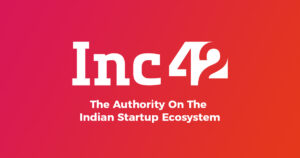Even after many years mentoring entrepreneurs and advising businesses, I continue to be surprised by the primary focus on products and processes, and the often incidental attention to hiring and nurturing the right people. Employees are still too often thought of as a commodity, to be acquired “just in time” for the lowest cost, and managed as a disposable asset.
All this despite continuing evidence that the right people make a business succeed, rather than the other way around. Further, based on results from the Sierra-Cedar HR Systems Survey, businesses that use data and tools in their people management, rather than traditional manual processes, see a 79% higher return than other organizations, suggesting the time is ripe for relying on data and analytics.
With the latest advances in software technology, it’s no longer cost-prohibitive for business entrepreneurs, who can’t yet afford a human resources department, to take advantage of analytics tools. Almost any startup can start with Excel, and move to open-source data analysis tools, including Python or RStudio. Bigger organizations should invest in the new “big data” tools.
For a hands-on guide in developing data-driven people strategies, I found some practical techniques in the classic book, “The Data Driven Leader,” by Jenny Dearborn and David Swanson. Based on many years of HR leadership at SAP and elsewhere, these authors start by highlighting the risks of not leveraging data analytics. I have added my own observations to theirs as follows:
- People decision making by gut, more than data. Common sense and emotionally driven decisions are sub- optimal in assessing team members. Data, however, removes guesswork, biases, and anecdotal reasoning that can throw decision efforts off course. It’s the same for customers and products, where analytics have long proven their value.
- Working on the wrong problem or assumption. Data helps avoid predetermined (and often erroneous) approaches to solving your people problems. Don’t let one incident, observation, rumor, or misunderstanding cause a rush to judgement, or hiring mistake. Make sure subjective feedback is buttressed by objective data before making decisions.
- Measuring efficiency rather than effectiveness. Efficiency in the workplace is the time it takes to do something, but it can ignore work quality and customer impact. Employees are often ineffective because they don’t care about their work or because they don’t possess the skills to contribute. Use data analysis and metrics to measure for results.
- Subjectively measuring employee engagement. Manually assessing engagement clearly isn’t working. According to Gallup’s often quoted global engagement survey, only 21 percent of workers are now fully engaged in their job, which is hugely expensive in productivity. With data and analytics, you can gauge employee engagement accurately.
- Underestimating absenteeism and accident costs. Many businesses still ignore the magnitude of the problem of employee absenteeism and accidents. They look only at historical data, and lump it all under “the cost of doing business.” The best leaders use data and analytics to identify key offenders to continually reduce these problems.
- Failure to factor in new employee ‘time-to-performance’. Based on statistical data, it typically takes eight months for a newly hired employee to reach full productivity, and that doesn’t include hiring. Through analytics on current employees, you will be able to predict re-training requirements and minimize employee turnover.
- Waiting to hire until the business is in crisis mode. It’s easy for entrepreneurs to fall into the trap of focusing only on what’s urgent and leaving aside what seems merely important. The solution is to plan ahead by using data analysis tools with predictive indicators. Trying to hurry the hiring process is a key reason for bad hires in business.
Most companies I know will claim to be busy collecting and analyzing data, but very few actually use it to drive people management. Integrating the analytics of people management with business results is key to driving a winning strategy and long-term sustainability in today’s competitive and rapidly changing environment. These should not be seen as two separate efforts.
I often have to remind entrepreneurs that good products are built with the best technology, but good businesses are built with the best people. Great business leaders have figured out how to apply the right attention, time, and tools to both. Where are you along this spectrum?
Marty Zwilling
Source: Startup Professionals










